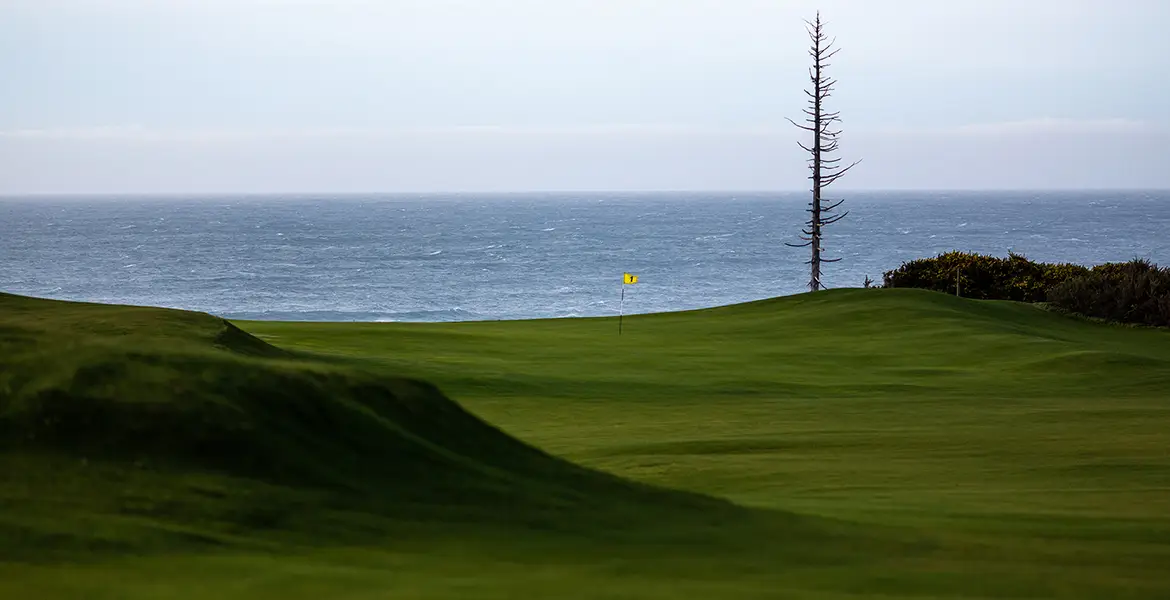The Manufacturers of golf equipment live by a simple rule: If a club wins on Sunday, it sells on Monday. Because as much as we average golfers know that the pros’ swings are far better than ours, our purchasing decisions are still heavily influenced by what the world’s best play. As more than one clubmaker put it, “The pros validate our equipment.”
Which makes sense: If the pros use that gear to win, it’s gotta be good. But it begs another question: Are the clubs that we buy the same ones the pros are using?
For the most part, yes. According to all the manufacturers, what we play and what they play is fundamentally the same.
With some minor exceptions.
“We pride ourselves on offering the same equipment to consumers as we do to our Tour players,” says Pete Samuels, spokesperson for Ping. “We offer special wedge grinds and one-off putters to consumers just like the pros. The only current exception is Bubba’s [Watson] driver with the racing stripe. The stripe is a feature of the new i25 driver; Bubba wanted it on his pink G25 driver so we agreed to put one on there.”
“Our pros play the same clubs that are available at retail,” explains Scott Goryl of Callaway. “We might have other lofts available in our Tour trailer, but otherwise the products are the same.”
At Titleist, all metalwoods and irons come from the same toolings, whether going to us or them. “There was one exception last year,” says Chris McGinley, vice president of marketing for golf clubs. “We made Jason Dufner a single 913D2 9.5-degree driver prototype because he needed more spin. And we have a couple of players, Webb Simpson most notably, playing an older forged iron called the Titleist 680. But otherwise, our pros and the market use the same AP1, AP2, CB, and MB iron heads.”
The same is true at Nike, where Director of Engineering Nate Radcliffe adds that players like Tiger Woods and Rory McIlroy actually help determine what clubs the public will be buying a few months down the road. “We work closely with our athletes to apply their insights into making better products,” says Radcliffe. “Is every product out there on Tour personally available now? No. Could it be at some point? Yes.”
For example, the driver Tiger used in 2013 was slightly more pear-shaped than the Nike driver for sale last year. That shape is now the basis of the current Covert 2.0 driver. “It’s no different from what you see in Detroit when car models change a little in appearance but the technology is built in,” explains Radcliffe. “You may not be able to get what Tiger and Rory have at any given moment in time, but the insights they provide us are probably foreshadowing what will be in future product.”
And right this moment? “Rory’s driver is a Covert 2.0, very much off the rack.”
“We give our pros exactly what you play,” says Mike Fox, director of global product marketing for Adams Golf. “We’re a small company and it’s expensive to create a new tool every time you create a new loft or face angle just for the Tour.” And as at Nike, what you see on TV likely will be in your hands soon. “Almost all our hybrids started as prototypes on Tour.”
However, when Adams recently signed Ernie Els, a “new” club was created for him. “We started with the computer file of our new XTD Cross-Cavity iron and milled him a set,” explains Fox. “It’s about 7 percent smaller than the existing club and has the toe shape he likes, a little higher and boxy. By the way, one milled set of irons costs about $10,000.” If the club generates buzz, Fox says Adams might come out with an Ernie Els model—mass-produced, of course.
The shafts the pros play also are the same as those sold to the general public at a price, sometimes steep. And again, they often get those shafts months before they’re available to the rest of us. But it’s worth noting that the pros often play stiffer, and sometimes heavier, shafts than average players do—one area where we are well advised to not follow their lead.
The pros’ clubs most likely to be unique are wedges and putters, which can be reshaped for eye appeal and reweighted for feel. “These products tend to be more personal,” McGinley notes, “which is why we have so many choices both out on Tour and in the market. The Tour gets more choices but that ultimately helps us determine what to offer in the market.”
The pros also adjust their clubs to their swings and conditions. “Most of the modification is to the sole,” says Radcliffe, “to the bounce across the bottom of the club, which refines how the club moves through the turf. Tour players use the sole to deliver the leading edge of the club into the ball at the proper height. Softer conditions require more bounce, firmer conditions less bounce; players who make a steeper swing want more bounce, shallower players less bounce; guys who hit more open-face wedge shots need less bounce, square-face wedge shots more bounce.”
Some changes are just cosmetic. Many pros prefer wedges with a raw head that hasn’t been finished or plated. “The reason is purely practical,” says McGinley. “It’s easier and better to grind a wedge that isn’t plated, which gives us the option of tweaking the sole grind in the Tour truck. Some players who don’t need their wedges tweaked use chrome-plated wedges. In either case, the guys on Tour almost unanimously prefer a silver finish. They switch their wedges about three times a year on average, and never re-groove an old wedge. It’s always a new head.”
And it’s the same head we get. We just have to pay for it.






